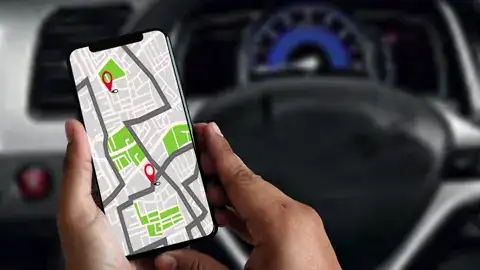For anyone who loves the great outdoors, traveling, or exploring new places, knowing how to navigate is crucial. With technological advancements and diverse environments to contend with, a wide array of navigation tools is at your disposal, each with features tailored for different situations. Let’s examine some of the most common and useful tools for navigation available today.
Table of Contents
How Personal Navigation Tools Redefine Our Journeys
Personal navigation technologies have transformed our means of travel across the globe and have become essential tools in everyday life. These systems, encompassing GPS devices and sophisticated mobile applications, are designed not only for directional guidance but also to enrich our travels. Equipped with comprehensive maps, they enable users to navigate with greater efficiency, avoid congested routes, and select the fastest itineraries to their intended destinations.
They serve purposes beyond mere navigation; these systems also provide insights into local attractions, deliver reviews of surrounding establishments, and generate tailored suggestions that match users’ preferences. Additionally, they contribute to safer travel by offering real-time updates on road statuses and traffic interruptions.

1. Compass: The Time-Honored Navigator
The compass has long been a symbol of adventure and guidance, offering a steadfast means to journey through vast terrains and seas. This simple yet effective device uses Earth’s magnetic properties to reliably point towards magnetic north with a magnetized needle. Despite its simplicity, the compass is a crucial tool for explorers, especially when modern GPS devices are unreliable. In dense forests, near high cliffs, or during severe weather conditions where satellite signals can weaken, possessing the skill to navigate with a compass and a detailed map is critical. This skill ensures safety even when electronic navigation systems fail.
2. Maps: The Traditional Route Planner
For centuries, paper maps have been the quintessential tool for navigation, their design perfected through years of exploration and mapmaking. Various types of maps exist to cater to specific navigational needs: hikers use topographic maps with detailed elevations to traverse challenging terrains; drivers utilize road maps to chart a course from one location to another; and sailors depend on nautical charts for navigating through dangerous waters.
These maps are crucial for trip planning, providing a comprehensive visual overview of the landscape and pointing out key landmarks that could be overlooked. Even with the rise of digital mapping technologies, traditional maps maintain their relevance. Their physical form ensures functionality without the need for power or internet connection, offering a dependable source of direction when electronic devices might be unreliable.

3. GPS Devices: High-Tech Location Tracking
GPS devices have become essential tools for navigation in the modern world, changing the way we travel. These devices use satellite signals to determine precise locations anywhere on Earth. Especially for those heading into uncharted areas or remote places, handheld GPS devices are invaluable, providing confidence and a clear sense of direction. These small gadgets not only contain comprehensive maps but can also accurately track the user’s route, making it simple to backtrack if necessary. GPS units allow users to mark waypoints for important spots or landmarks and guide them back to their starting point, ensuring they don’t lose their way in the wilderness.
However, it’s wise for anyone venturing into unknown regions to also carry traditional navigational tools like physical maps and compasses. While electronic devices have their benefits, they have vulnerabilities: batteries can run low, systems might malfunction, and satellite connections can get blocked by dense terrain such as heavy forests or deep valleys.
4. Smartphone Apps: Pocket-Sized Guides
Your smartphone’s built-in GPS function allows you to navigate city streets and cross international boundaries with ease. Mapping applications like Google Maps and Apple Maps have revolutionized our interactions with surroundings by delivering instant directions, live traffic updates, and various location-based services at our fingertips. For adventurers trekking beyond cities, there are specialized apps that offer detailed topographical maps for offline use in areas without cell service.
These compact digital navigators turn the entire globe into an accessible journey, giving even novice explorers the confidence to traverse unknown landscapes. However, it’s important to remember that all these features are limited by your smartphone’s battery life, which is a crucial consideration when embarking on any adventure.

5. Personal Locator Beacons (PLBs) & Satellite Messengers: Emergency Signalers
For those exploring wild or mountainous areas, ensuring personal safety is crucial. In such remote locations where regular communication fails, carrying Personal Locator Beacons (PLBs) and Satellite Messengers is vital for staying safe. PLBs are designed to be highly reliable in emergencies, signaling your location to search and rescue teams if you’re in danger. Activating a PLB sends a distress signal to a satellite network that promptly informs local emergency services, initiating a rescue mission.
Satellite Messengers, however, have the added benefit of allowing adventurers to send predefined messages to loved ones and request help in non-emergency situations. This feature enables explorers to keep in touch with the outside world from even the most secluded spots. Both PLBs and Satellite Messengers are essential tools for anyone seeking adventure whilst maintaining the reassurance that comes with advanced technology.
6. Navigation Watches: Compact Tools for the Trail
As the attraction of outdoor adventures grows, personal navigation devices are also advancing quickly. Navigation watches are leading this progress. These devices, worn on the wrist, showcase remarkable innovation by combining a light design with a comprehensive range of features, far surpassing traditional compasses. For those navigating winding paths in forests or climbing steep mountain faces, these small devices have become essential. Equipped with GPS technology, they provide real-time location tracking, allowing adventurers to map their routes accurately.
Choosing What’s Best for You
Selecting the right navigation aid requires careful consideration of various factors, tailored to the specifics of the environment you plan to traverse. For those venturing into rugged or unpredictable areas, choosing a durable GPS device that can endure harsh weather conditions and diverse terrains is crucial. On the other hand, when navigating cityscapes or clearly marked paths, a smartphone app can suffice, offering easy-to-use interfaces and up-to-the-minute updates.
Travelers must balance different features: the robustness and battery life of a device; the level of detail in terrain maps versus availability of live traffic information; water resistance compared to compatibility with other gadgets. The decision you make will significantly influence your experience, underscoring the importance of aligning your navigation tool with your specific needs and the unique aspects of your destination.

The Bottom Line
Though technology has greatly improved our capacity for efficient navigation across the globe, it’s important not to become overly reliant on it without understanding its limitations and potential failings in certain conditions. Whether using high-tech devices or traditional methods, make sure you know how they work before depending on them completely during your travels.


